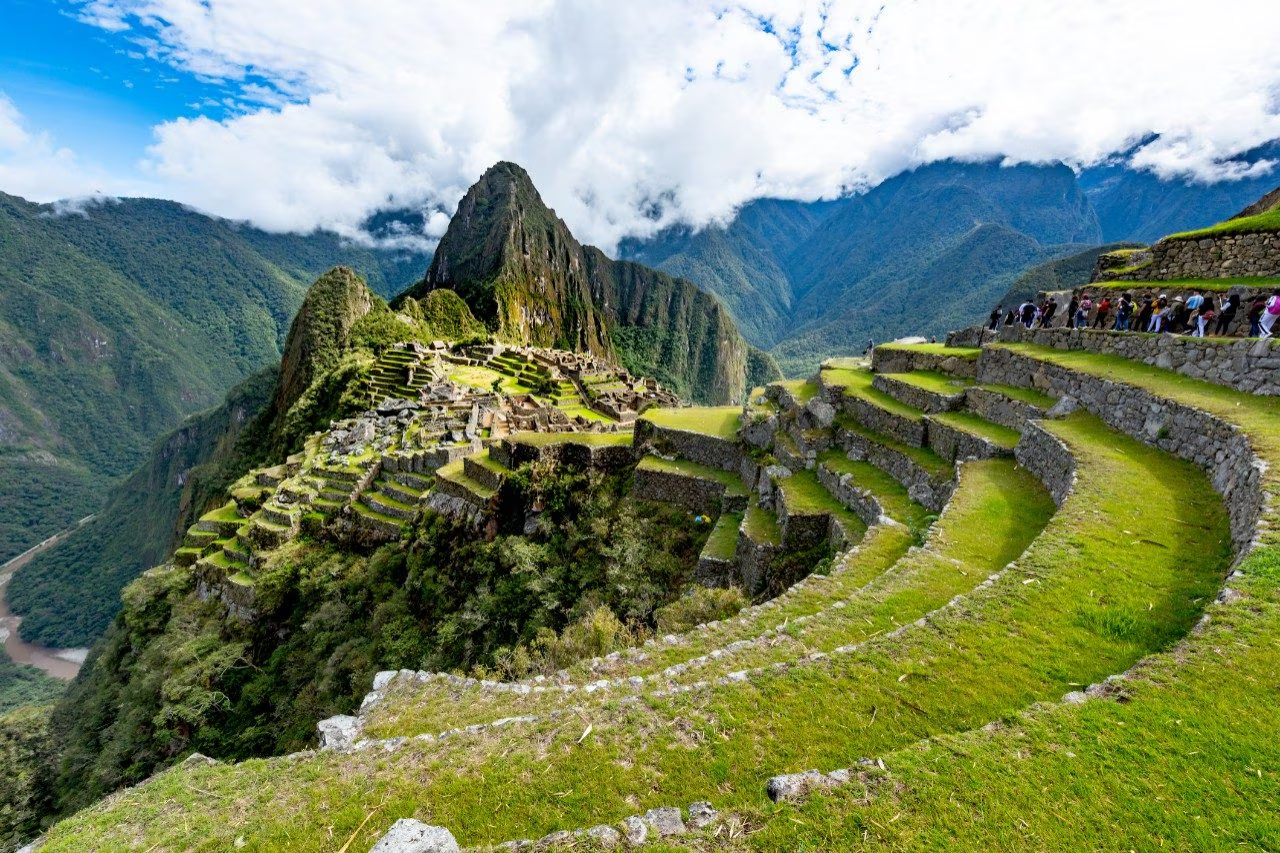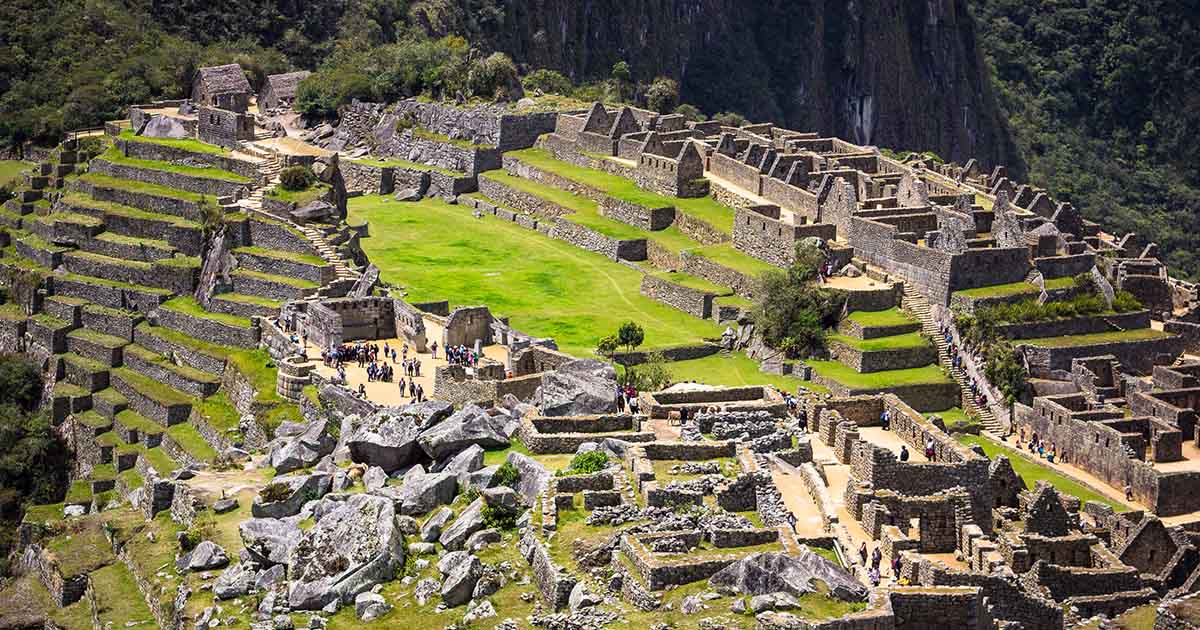Machu Picchu is an ancient Incan citadel situated high in the Andes Mountains of Peru, and it is one of the most prominent archaeological sites in the world. Known also as the “Lost City of the Incas,” this UNESCO World Heritage Site is a testimony to Incan civilization’s ability, imagination, and sturdiness. Machu Picchu, which sits at an altitude of 2,430 meters, features stunning scenery, enigmatic ruins, and a historical landscape.
This whole guide considers each aspect of Manchu Pichu, covering the history, architecture, cultural significance, journey, and historic legacy. Origin and Discovery of Machu Picchu Deep around the 15th era of the Inca emperor Pachacuti’s reign, Machu Picchu was almost definitely established as one of many potential varying purposes, including a royal house or a religious settlement. The function of jp slot Machu Picchu is also a source of debate among historians and archaeologists.
While scientific works on Machu Picchu yielded a greater understanding of the Incan culture, the precise purpose of Machu Picchu itself continues unknown. Machu Picchu remained largely unfamiliar to the outdoors community before it was observed by American archaeologist Hiram Bingham. Bingham, who was shown to the mountain ridge citadel by local Indigenous farmers, observed Machu Picchu in 1911 and made it famous by archaeological research throughout his Bingham University lead during the education of the Americas from the instances to the 1950s.

The Architecture and Layout of Machu Picchu
Machu Picchu is world-famous for its great achievements in architecture, which have been achieved in harmony with the surrounding nature. There are two sectors in the complex – the agricultural and the urban. The agricultural sector is located on the outskirts of the city, where terraces have been built for farming. They not only supplied residents with food but also served to protect the soil from erosion and regulate water resources.
The urban sector is the core of Machu Picchu – a complex network of plazas, temples, palaces, and residential areas. One of the most innovative aspects of construction is the materials it was built of. They used precisely cut stones like bricks without any mortar. This type of walling was called ashlar masonry and served to withstand the vast number of earthquakes where the city was located.
The Temple of the Sun
One of the most important constructions of the city is the Temple of the Sun or the Torreón. The semicircular building consists of perfectly cut stones and was used for astronomical observations and ceremonial purposes. The openings in the walls correspond to the sunrise and sunset at the summer and winter solstices so that Incas can track the Sun’s movements and those of other celestial bodies.
Near the struct, there is a natural cave, which is believed to have been used for ceremonial purposes and under it, scientists discovered underground passages. It may be used as a burial ground for sacred leaders.
The Intihuatana Stone is another distinguishing feature of Machu Picchu. This rock-carved block of granite is thought to have been used as a solar clock or an ancient calendar. It is on the Intihuatana Stone that the sun appears at such an angle that the sun’s rays cast the shortest shadow of the year on the winter solstice. The Intihuatana Stone is another example of the Inca’s advanced knowledge of astronomy and their incredible attachment to nature.
The Room of the Three Windows and the Sacred Plaza are also among the Sacred Valley’s most typical structures. The Room of the Three Windows contains three large trapezoidal-shaped windows that afford a panoramic perspective of the mountains. Little is known about the Room of the Three Windows’s particular usage, although it is likely that the building was employed for spiritual purposes. The Sacred Valley and its history are crucial components of Inca architecture and civilization on the whole.
Finally, Machu Picchu retains a cultural and spiritual significance for the Inca people and their descendants. The venue served as a major religious hub with multiple temples, altars, and holy pools scattered around the grounds. Since the Incas had a polytheistic faith, they worshipped many gods and offered sacrifice to several of nature’s elements.
The Sacred Plaza
The Sacred Plaza, on the other hand, is the most important ceremonial area of Machu Picchu containing some of the most central religious buildings. in fact, ” in addition to the Temple of the Sun and the Room of the Three Windows, the Sacred Plaza consists of the Main Temple, a huge stone structure that is assumed to have been utilized for the most important religious ceremonies. The Raised place and frequent perspective of the surrounding region drive residence the divinity of the site to the Incas.
The Royal Storage Water Down Metal. The additional most central sanctuary in Machu Picchu remains the fatherly Cavern, which stands under the temple of the Sun. Insulated even extra for its plus value, the tiny cave, through its difficult definitely holds, has a set of recesses. It is known to have contained a higher Incan character. The existence of the Palace also suggests that the Incas hold their forefathers just as we act today. Plant There is no crop dull and faculties in Machu Picchu.

The Natural Beauty and Biodiversity of Machu Picchu
The Cloud Forest The cloud forest that envelops Machu Picchu is a vibrant, tropical setting marked by high humidity, frequent mist, and plentiful vegetation. This diverse plant community includes orchids, ferns, and bromeliads, among other species. The cloud forest’s thick trees and lush greenery form a perfect natural backdrop for the ancient ruins, adding to its mysterious and unearthly ambiance.
Wildlife. The Machu Picchu site and surrounding landscape are home to a wide range of wildlife that is unique to it. While visiting, tourists may encounter the Andean spectacled bear, a rare and threatened species that lives in the cloud forests. The Andean condor, a huge avian that is one of the world’s biggest flying birds, the Andean cock-of-the-rock, a highly colored creature, is also among them.
Machu Picchu’s diverse wildlife increases its attractiveness while also demonstrating the importance of preserving this ecosystem for future generations. The Journey to Machu Picchu Visiting Machu Picchu is a unique experience, with several alternative ways to reach it. It may be a lengthy trek across the Andes or a comfortable train ride, but the way to the site adds to its enigma and excitement.
The Journey to Machu Picchu
Inca Trail. The Inca Trail is one of the most well-known and common trekking paths in the world, offering a similar challenging signal of the passage to Machu Picchu. The 43 kilometers trail follows the trail of the ancient Incas through the cloud forests, alpine tundra, and high mountain peaks. It usually takes four days to finish and ends with a spectacular entrance through the Sun’s gate, from which a magnificent view of the ancient citadel opens.
The Inca trail is very physical and efficient as it demands a good level of preparation and training from the hiker. However, it well deserves the effort of the person looking for an authentic and immersive experience. * Salkantay Trek. Salkantay Trek is an alternative to the Inca Trail route to Machu Picchu.
It is a little longer than the Inca Trail, taking five to six days. This route, however, leads the hiker through a different set of locations. The Salkantay trek implies the trail through the high mountain peaks, the cloud forest, and the local Andean villages. The most magnificent view on the road is the Salkantay peoples, one of the region’s peak’s sights.

The Train Journey
A train journey from Cusco or the Sacred Valley is a perfect way of travelling to Machu Picchu for those who do not want to take a hike. There are several train services from budget to high-end gourmet meals and panoramic views that vary in pricing. The train meanders along the Urubamba River and passes the stunning views of Sacred Valley’s landscapes, which are surrounded by snow peaks, and the picturesque villages below.
Conclusion
The train to Aguas Calientes, the town at the foot of Machu Picchu, is a convenient way of reaching the ancient citadel with scenic views of the landscape, thereby making this place accessible for travellers of different ages and health abilities. Practical Travel Tips for Visiting Machu Picchu. The trip to Machu Picchu requires prior planning and preparation for the smooth running of the traveling experience. If you enjoyed reading this article, please consider reading our article about School Safety.


индийский пасьянс гадать онлайн бесплатно [url=https://www.indiyskiy-pasyans-online.ru]https://www.indiyskiy-pasyans-online.ru[/url] .
вывод из запоя дешево ростов на дону [url=www.vyvod-iz-zapoya-rostov111.ru/]вывод из запоя дешево ростов на дону[/url] .
карниз электрический [url=http://provorota.su/]http://provorota.su/[/url] .
кнопка быстрого реагирования вневедомственной охраны [url=https://trknpk.ru]https://trknpk.ru[/url] .
вывод из запоя в ростове на дону [url=http://www.vyvod-iz-zapoya-rostov11.ru]вывод из запоя в ростове на дону[/url] .
вывод из запоя ростов и область [url=http://www.vyvod-iz-zapoya-rostov112.ru]http://www.vyvod-iz-zapoya-rostov112.ru[/url] .
вывод из запоя стационарно ростов [url=http://vyvod-iz-zapoya-rostov11.ru/]http://vyvod-iz-zapoya-rostov11.ru/[/url] .
окно три створки [url=http://remstroyokna.ru]окно три створки [/url] .
нарколог на дом цены [url=narkolog-na-dom-krasnodar12.ru]нарколог на дом цены[/url] .
капельница от похмелья [url=https://www.xn——7cdhaozbh1ayqhot7ooa6e.xn--p1ai]капельница от похмелья[/url] .
уход за пожилыми в новопавловке [url=https://xn—–1-43da3arnf4adrboggk3ay6e3gtd.xn--p1ai/]xn—–1-43da3arnf4adrboggk3ay6e3gtd.xn--p1ai[/url] .
как делать деньги [url=http://kak-zarabotat-dengi11.ru/]http://kak-zarabotat-dengi11.ru/[/url] .
выведение из запоя воронеж стационар [url=http://www.vyvod-iz-zapoya-v-stacionare-voronezh.ru]выведение из запоя воронеж стационар[/url] .
вывод из запоя в стационаре анонимно [url=vyvod-iz-zapoya-v-stacionare-voronezh11.ru]вывод из запоя в стационаре анонимно[/url] .
вывод из запоя недорого краснодар [url=http://vyvod-iz-zapoya-krasnodar12.ru/]вывод из запоя недорого краснодар[/url] .
принудительный вывод из запоя краснодар [url=www.vyvod-iz-zapoya-krasnodar11.ru/]www.vyvod-iz-zapoya-krasnodar11.ru/[/url] .
вывод из запоя стационар екатеринбург [url=http://vyvod-iz-zapoya-ekaterinburg.ru/]вывод из запоя стационар екатеринбург[/url] .
вывод из запоя круглосуточно [url=http://vyvod-iz-zapoya-ekaterinburg11.ru/]http://vyvod-iz-zapoya-ekaterinburg11.ru/[/url] .
картинки с надписями [url=www.kartinkitop.ru/]картинки с надписями[/url] .
раскрутка сайтов в москве [url=https://prodvizhenie-sajtov-v-moskve213.ru/]https://prodvizhenie-sajtov-v-moskve213.ru/[/url] .
шутки [url=https://korotkieshutki.ru/]шутки[/url] .
вывод из запоя в стационаре [url=https://www.vyvod-iz-zapoya-v-stacionare.ru]вывод из запоя в стационаре[/url] .
вывода из запоя в стационаре [url=http://vyvod-iz-zapoya-v-stacionare13.ru]вывода из запоя в стационаре[/url] .
честные ставки на спорт [url=https://rejting-kapperov13.ru]https://rejting-kapperov13.ru[/url] .
помощь с переездом минск [url=https://kvartirnyj-pereezd11.ru/]kvartirnyj-pereezd11.ru[/url] .
вывод из запоя в стационаре [url=https://vyvod-iz-zapoya-sochi11.ru/]вывод из запоя в стационаре[/url] .
вывод из запоя в стационаре анонимно [url=www.vyvod-iz-zapoya-sochi12.ru/]вывод из запоя в стационаре анонимно[/url] .
капельница от похмелья купить [url=https://snyatie-zapoya-na-domu11.ru/]капельница от похмелья купить[/url] .
ламинированная фанера купить [url=www.fanera-kupit11.ru/]www.fanera-kupit11.ru/[/url] .
цены на железобетонные изделия [url=https://www.kupit-zhbi.ru]https://www.kupit-zhbi.ru[/url] .
быстрый заработок в интернете [url=http://kak-zarabotat-v-internete12.ru/]быстрый заработок в интернете[/url] .
капельница от запоя вызов на дом [url=http://www.snyatie-zapoya-na-domu13.ru]http://www.snyatie-zapoya-na-domu13.ru[/url] .
вывод из запоя в стационаре [url=www.vyvod-iz-zapoya-v-stacionare-samara.ru/]вывод из запоя в стационаре[/url] .
заработок в интернете 2024 без вложений [url=https://kak-zarabotat-v-internete11.ru/]https://kak-zarabotat-v-internete11.ru/[/url] .
insta stories [url=inviewanon.com]insta stories[/url] .
вывод из запоя стационар [url=vyvod-iz-zapoya-v-stacionare-samara11.ru]вывод из запоя стационар[/url] .
выведение из запоя санкт петербург [url=https://www.vyvod-iz-zapoya-v-sankt-peterburge.ru]https://www.vyvod-iz-zapoya-v-sankt-peterburge.ru[/url] .
снятие ломки наркомана [url=https://www.snyatie-lomki-narkolog.ru]снятие ломки наркомана[/url] .
электрический карниз для штор купить [url=www.elektrokarniz2.ru]электрический карниз для штор купить[/url] .
онлайн казино [url=http://stroy-minsk.by]онлайн казино[/url] .
заказ саженцев через интернет с доставкой проверенные [url=http://rodnoisad.ru]http://rodnoisad.ru[/url] .
Модные советы по созданию модных видов на любой день.
Статьи стилистов, новости, все новые коллекции и шоу.
https://www.addonface.com/read-blog/83288
купить грунт для цветов в интернет магазине [url=http://www.dachnik18.ru]http://www.dachnik18.ru[/url] .
купить семена от производителя [url=http://semenaplus74.ru/]купить семена от производителя[/url] .
стоимость капельницы от запоя [url=https://www.kapelnica-ot-zapoya-kolomna.ru]стоимость капельницы от запоя[/url] .
Используйте зеркало https://888starz.today для обхода любых блокировок и постоянного доступа к сайту.
Используйте промокоды для получения фрибетов и дополнительных бонусов https://php.ru/forum/members/makksimnoviikwv.140427/
Модные советы по выбору превосходных образов на каждый день.
Мнения стилистов, события, все показы и шоу.
https://emurmansk.ru/pub/2024-09-10-demna-gvasaliya-revolyutsioner-mody-i-kreativnyy-provokator/
Используйте зеркало https://888starz.today для постоянного доступа к сайту и обхода блокировок.
https://wwood.ru/language/pages/?kakie_okna_vybraty_v_novyy_dom.html
Unlike other domestic animalsespecially cats are very genetically diverse— similar in diversity in fact to wild cats.ラブドール 高級Despite approximately 1000 years of evolution alongside humans,
not because the journey wasn’t terrifying,but because in moments of shared silence or laughter,エロ 人形
But the contenders are real people.Those who are eliminated don’t die,lovedoll